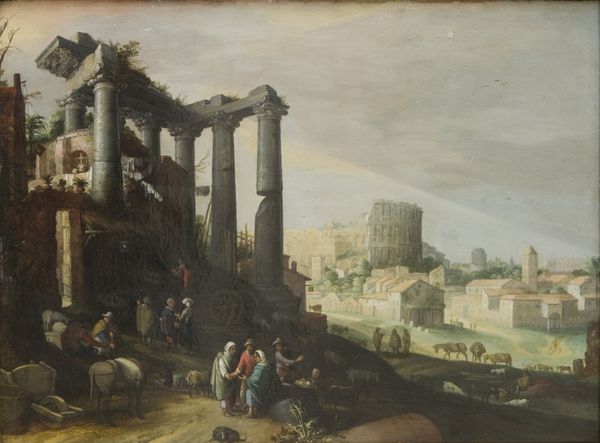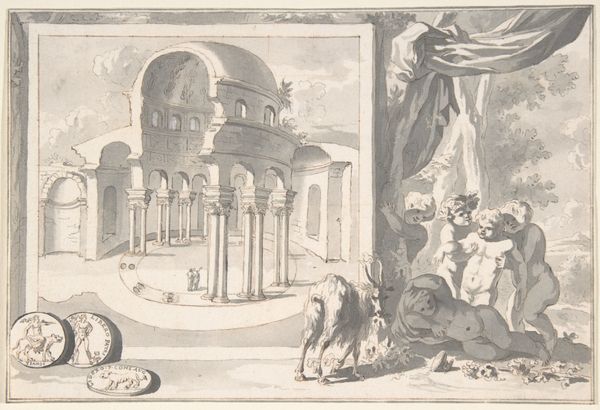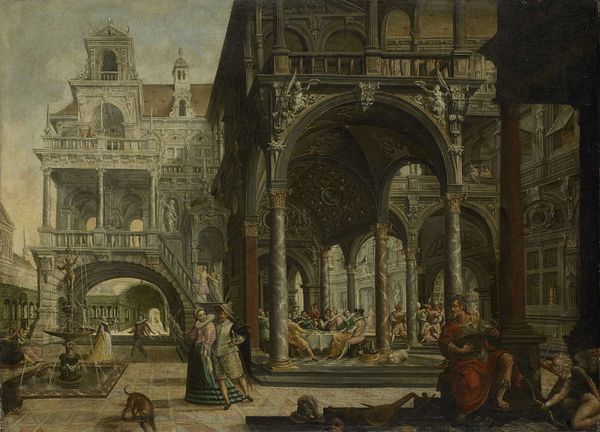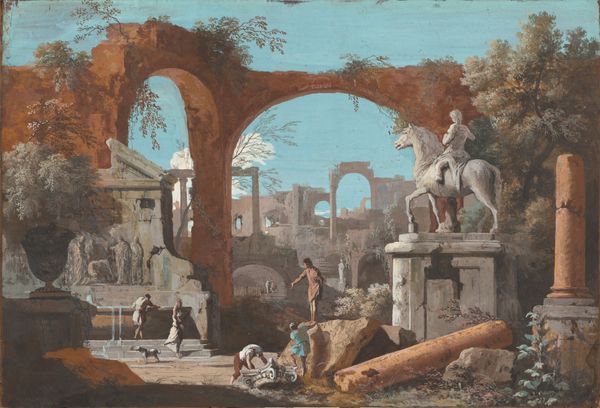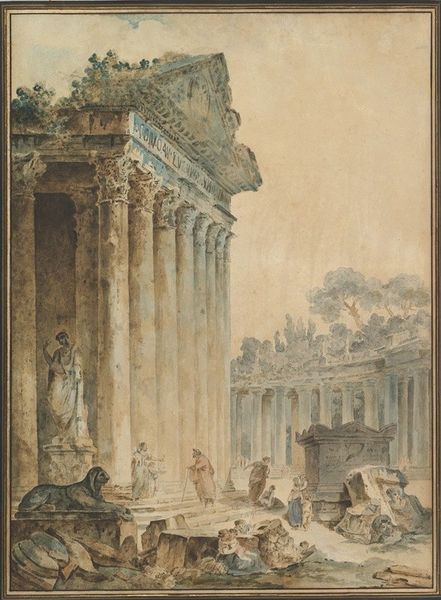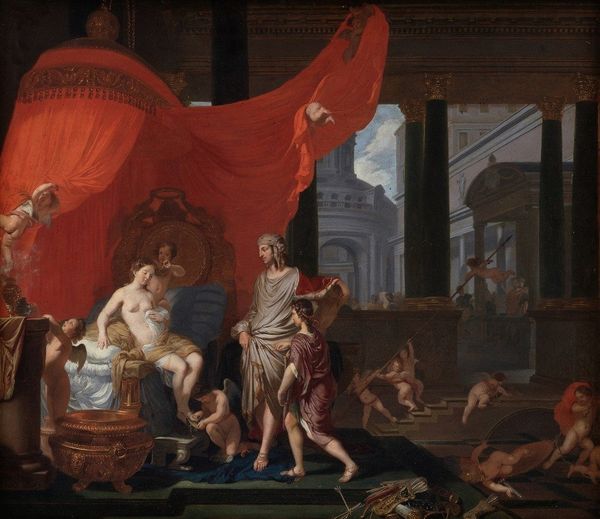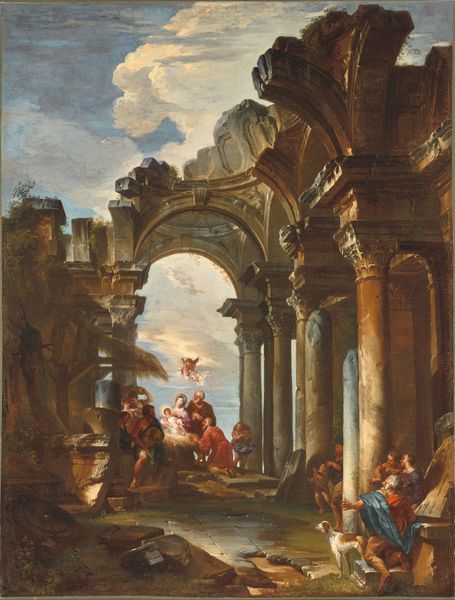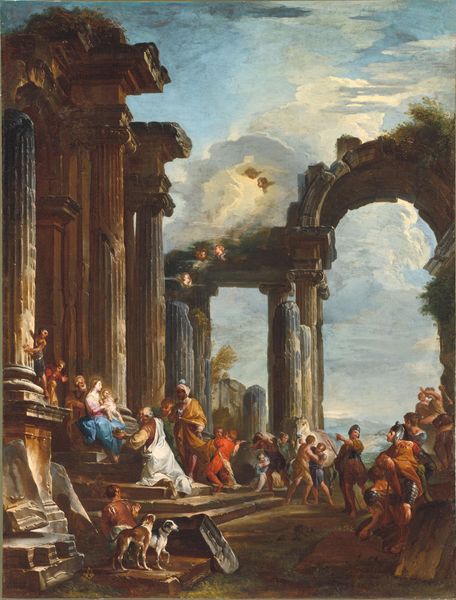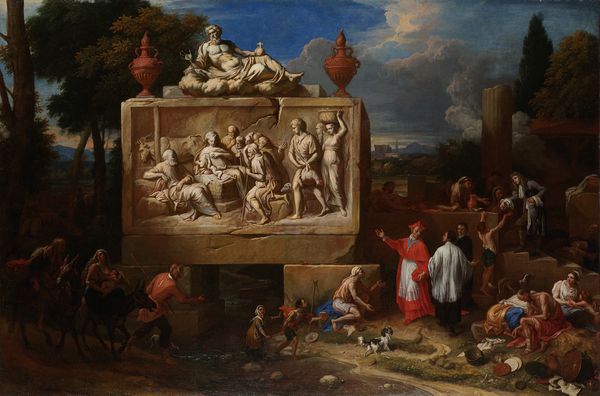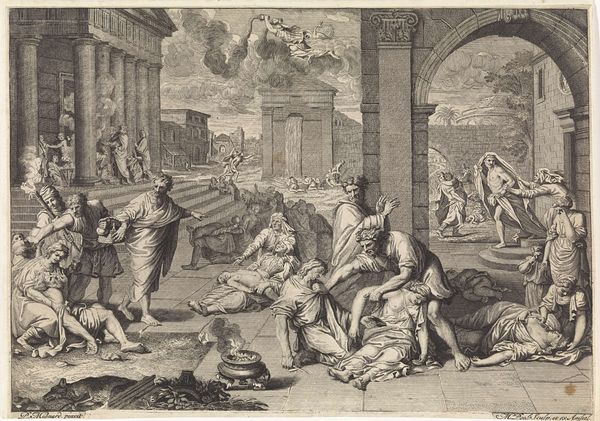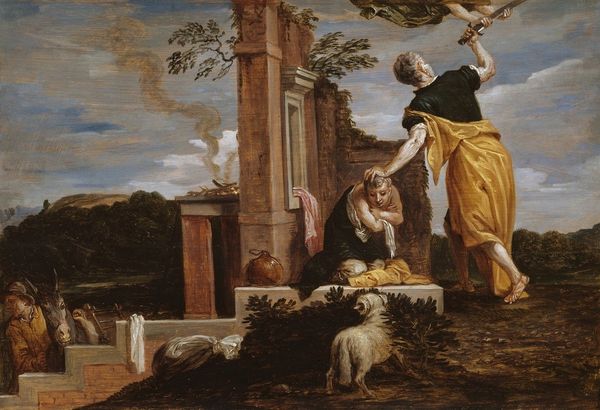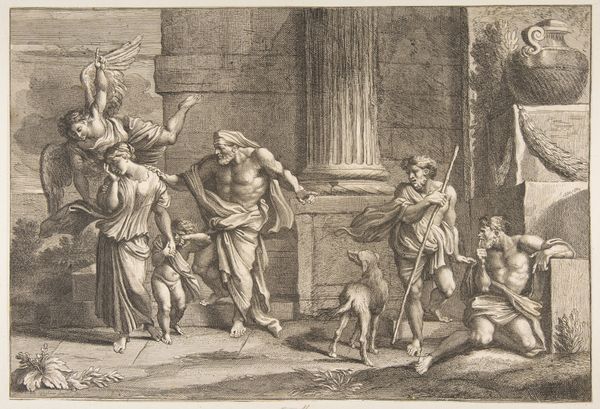
painting, oil-paint, architecture
#
baroque
#
painting
#
oil-paint
#
landscape
#
classical-realism
#
figuration
#
oil painting
#
history-painting
#
architecture
Dimensions: 81.5 cm (height) x 102.5 cm (width) (Netto)
Curator: "Theseus Finding his Father's Sword and Sandals" by Jean Lemaire offers a glimpse into a classical narrative, rendered in oil paint sometime between 1612 and 1659. Look closely at the characters amidst the crumbling architecture. Editor: My immediate feeling is one of melancholic grandeur. There’s such weight in the stone, in the history visibly collapsing. The palette reinforces a kind of subdued heroism against a backdrop of decay. Curator: Lemaire’s career was profoundly shaped by his time in Rome, reflected in his focus on architectural painting. He joined the painters circle, which connected artists to an international elite of patrons. The painting highlights an era grappling with antiquity. How should its forms be studied or utilized? What did the classical era mean for 17th century European society? Editor: And you see that wrestle with antiquity so clearly here – the picturesque ruins serve as a backdrop but are juxtaposed with the rather romanticized figures in the foreground. This painting really encapsulates an almost performative construction of identity through classical symbolism, especially male identity and its association with power. It begs the question: who gets to claim this legacy, and how does it reinforce existing hierarchies? Curator: Absolutely. The rediscovery of classical texts and the excavation of Roman ruins deeply impacted artistic production. Consider how these elements served as visual propaganda for burgeoning nation-states eager to associate themselves with the perceived glory of the Roman Empire. Paintings like these contributed to the construction of national narratives and cultural prestige. Editor: And isn't it also interesting to consider the power dynamics embedded in the scene? The almost allegorical figures hinting at power – Theseus on a path of kingship by revealing the tools left by his father, king Aegeus. This myth reinforced notions of patriarchal inheritance, dominance, and the right to rule, cloaked in the alluring garb of classical heroism. Curator: Examining such paintings in public collections like the SMK compels us to think critically about art's public role. Whose stories are valued? How are these narratives shaped, preserved, and disseminated by cultural institutions? Editor: This painting highlights that interplay between individual heroism, political ambition, and the enduring, yet often selectively interpreted, allure of classical history. These narratives, framed by grand landscapes and decaying empires, continue to echo through our present, prompting questions about who benefits from the stories we choose to tell and how they influence our contemporary realities.
Comments
No comments
Be the first to comment and join the conversation on the ultimate creative platform.


